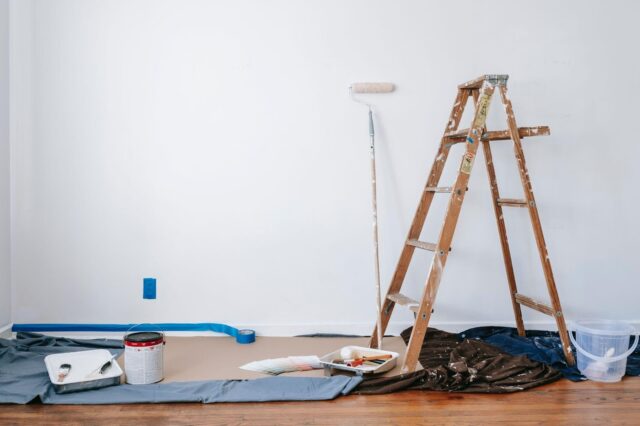
The drywall business is gradually becoming very popular and more widely known in the construction industry. This is because the drywall business has proven to be very profitable and quite easy to start with compared to other construction industry sectors. According to statistics, construction companies in the U.S. alone had a market of over $1.9 trillion in 2024, which goes further to prove that it is a very lucrative business venture to delve into.
As much as it is profitable, there are, however, still a few downsides and disadvantages that are peculiar to the industry. One such disadvantage is that the processes required to enable the business to flow smoothly can be lengthy and sometimes complicated for both the business owners involved and the customers.
To maintain proper profit making while still growing in business, there is a need to reduce the level of complexity required in relating business with the clients. One such way to achieve this is by introducing an easy and streamlined method of collecting payments or invoicing. In this article, we’ll learn about easy-to-implement methods to ensure a seamless and streamlined invoicing process for drywall contractors.
What is the Drywall Business About?

Drywall, or sheetrock business, is a sector of the construction industry that involves the installation of gypsum wall boards for a client. Usually, the drywall contractor or manager is hired or contacted based on recommendations from the architect or chief engineer in charge of the building project. Drywall contractors handle everything concerning the placement and installation of gypsum wallboard as well as other non-structural metal framings, insulation, taping, finishing, etc.
The drywall installation business is one of the most lucrative sectors of the construction industry and it is becoming attractive to more construction contractors or managers as it requires less equipment and capital to get started in the business.
However, as with other sectors in the construction industry, creating a streamlined invoicing process can become quite a hassle owing to several processes and manual documentation involved in the work, as well as including costs of materials, labor, etc. this is why creating an easy to use invoicing process is essential for this business.
The Challenge of Invoicing in the Drywall Business

Invoicing is one of the most important aspects of any business and also one of the most fragile and sensitive. A business is more likely to grow faster if the payment systems are in order without any form of hassle for the clients. Proper and easy-to-use invoicing greatly impacts this result, as it can leave the contractors happy and the clients satisfied with the quality of work done for the payment.
Due to the peculiarity and nature of the work involved in the construction sector, preparing an easy-to-use and detailed invoice can become a bit of a challenge. This could be owing to the numerous processes involved such as preparing the project budget, including the cost of materials, cost of labor, as well as a detailed inventory of materials acquired, cost of hiring additional labor to run other types of work if need be such as electricity costs, plumbing, etc.
How Drywall Constructions are Priced

There are different methods in which the drywall business is priced, and the method of payment estimation applied depends on the client and the estimation of the length of the project by the drywall contractor. For long-term projects, the drywall contractor can opt for an hourly pay rate or a flat rate.
Both payment measures have proven to be effective, but it is important to make sure that when setting the pricing rate, the contractor keeps in mind other additional costs that might be involved during the work process and also includes modalities to ensure those are covered and the contractor does not make a loss instead.
Although drywall projects can be priced hourly or flat rate, there is a general rule of thumb for pricing in the drywall business measured in feet per square foot. The formula for estimating drywall in the house includes
• 9′ ceilings: living area X 3.8 + 500 sq ft (approx) for garage.
• 10′ ceilings: living area X 4.1 + 500 sq ft (approx) for garage.
• 11′ ceilings: living area X 4.5 + 500 sq ft (approx) for garage.
• Add 0.4 to multiple for each additional foot in ceiling height.
How to Create a Streamlined Invoicing Process for Drywall Business

As mentioned earlier, payment collections are one of the most important aspects of any business, and the drywall business is not left out of this. However, as is common with most construction businesses or handyman services, payment collection and invoicing can become a bit of a challenge due to the peculiarities involved in the business. One such peculiarity involves the measurement of payment for the drywall business, which is measured in feet per square foot.
Here are some ways drywall contractors can create a streamlined invoice process that will be easy for both the client or customer to make payment and the contractor to create a smoother working relationship and a business contract.
1. The invoice should be organized and maintain a consistent format
As much as it is no news that most construction work, as with the drywall business, can be disorganized due to the number of different incoherent processes involved, it is still very vital to ensure that you present a professional brand outlook to clients and customers. Maintaining and presenting a consistent invoicing format is one of the best ways to ensure that there is no confusion during invoices as both clients and contractors are used to the invoicing format and method of calculations and estimations.
Presenting different incoherent invoice formats to clients regularly can lead to confusion, which, if not managed properly, can also result in disputes and legal reactions.
2. Invoices should include accurate data
This can pose one of the greatest challenges in the drywall business considering the method of payment measurement applied in the business. Accurately measuring and calculating the total feet per square of the entire project as well as other additional costs of labor, materials, etc. can pose a bit of a challenge.
However, this can be solved using drywall estimating software, which can help to ease the process of estimating costs and provide accurate data for payments.
3. Invoices should be sent on time
To receive payments on time, it is very important for the invoices to also be sent on time as soon as the work has been completed. Although, understandably, this can be sort of a challenge, especially because drywall managers have to deal with handling several other projects at the same time.
Sending out invoices on time goes a long way in ensuring that the payment process is seamless for both the clients and the drywall contractor.
4. Invoices should be detailed

Including detailed information about the work completed should be a priority when preparing the invoice for the client. A detailed invoice goes a long way in ensuring that both the client and the contractor are on the same page. Also, it helps the client to have full and accurate details of the job completed and the details of the contractor involved in the work.
Some important details to include in the drywall invoice includes:
• Invoice number and date
• Customer’s address
• Contractor’s address and contact
• Detailed and itemization of services
• Due date and payment methods
• Terms and conditions
Following these details helps the client to understand what they’re paying for and to whom they are making the payments.
5. Include different payment options
Oftentimes, contractors make the mistake of including limited payment methods. It is essential to keep in mind that some clients use other forms of payment methods, and failing to include different payment options can make the invoicing process difficult for clients.
In other cases, some clients already have their preferred payment options, which they are used to, and not including these options could also mean limiting their options. It is more advisable to add several other payment options when preparing an invoice so that the client can have several payment options to choose from.
6. Addition of terms and conditions
Clearly stated terms and conditions should be included in the invoice so that the clients and contractor are on the same page. Including clear and detailed terms and conditions also helps to foster faster payment and ensures that there are no confusion or disagreements between the contractor and the client.
Conclusion
One of the most important aspects for every contractor in the business is getting paid on time and without hassles. However, since the drywall business, as with other construction work, is filled with a lot of hassles and other additional processes aside from the main work at hand, preparing a concise invoice can become a bit of a challenge. It is highly important to communicate in the drywall invoice the details of the project as well as any additional costs if there were any.









